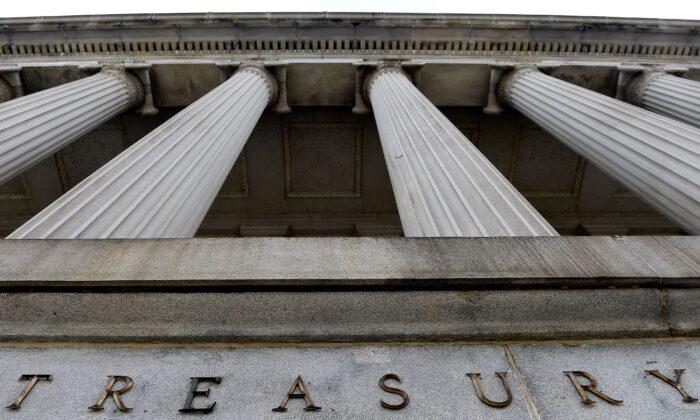For all the heat and light associated with the showdown battle for the speakership of the new Republican-controlled House of Representatives, the dealmaking addressed symptoms of the problems, not the root causes.
Consider the symptoms of one of the major problems that have plagued the United States for decades: out-of-control federal spending, as highlighted by the symptoms of massive spending bills that defy regular order, congressional earmarks, endless continuing resolutions, no federal budgets, and omnibus bills that fund Democrat spending priorities and include non-spending atrocities (such as gun control provisions).
What did the Mexican standoff between the Freedom Caucus and the GOP establishment Republicans accomplish to rectify out-of-control federal spending?
It would prohibit consideration of bills and joint resolutions requiring an increase in the debt ceiling, and restoring points of order against a net increase in budget authority for amendments to general appropriations bills and against budget reconciliation directives that increase net direct spending.
Another debt-related rule change is to “restore the requirement that the Congressional Budget Office and Joint Committee on Taxation, to the extent practicable, incorporate the macroeconomic effects of major legislation into the official cost estimates used for enforcing the budget resolution and other rules of the House.” The Democrats didn’t care about the long-term effects of their profligate spending on the U.S. economy.
Appropriations, the Budget, and Impoundment
During the first 70 years of the 20th century, the only time the federal budget wasn’t balanced was during an economic downturn or wartime. Americans understood that a heavily indebted government ceded control of that government to its creditors, who could very well be foreign governments or others with ill intentions toward the United States.
Veto-proof Democrat control of Congress beginning in 1955 changed all that, as the socialism inherent in Democrat domestic politics resulted in massive spending programs, such as Lyndon Johnson’s Great Society. The Democrats’ political tactics evolved into “pay for play” (a way to milk campaign dollars for donors interested in getting favorable legislation passed) and “tax-and-spend” (a way to buy votes by bringing home the bacon—never mind the pass-through costs to taxpayers!).
The problem for the Democrats was the long-standing congressional appropriations process and a teeny tiny constitutional power granted to the president to withhold spending.
Until 1974, spending was controlled by congressional votes on separate bills that concerned specific appropriations, revenues, and authorizations—generally developed by the congressional committees responsible for funding and oversight of specific cabinet departments and agencies, such as Defense, Health and Human Services, Labor, etc. The process empowered committee chairmen while providing for public scrutiny of all appropriations bills.
Still, the Democrats had pretty much free rein to spend during the 1960s because they controlled Congress and the presidency until 1969.
These are the key elements of the Act: to establish a new congressional budget process; to establish committees on the budget in each House; to establish a Congressional Budget Office; to establish a procedure providing congressional control over the impoundment of funds by the executive branch.
In short, the Act was a structural change to the budgeting process that diluted the power of congressional committee chairmen, curtailed the constitutionally granted impoundment authority of the president, and established a staff bureaucracy (the Congressional Budget Office). The newly created CBO, a particularly important cog in the revised appropriations process wheel, was charged under the Act with impartially gathering data and making estimates, that is, placing a financial “score” on any proposed legislation that affected the budget-making process. The CBO was staffed proportionally by party line.

What to Do?
Real structural changes are required in Congress’s appropriations process—and not the kind that can be easily undone or corrupted by future speakers of the House. History has shown that the root cause of out-of-control spending is the Congressional Budget and Impoundment Control Act of 1974.The new deal that includes the rule changes targeted at reducing spending and making it more politically difficult to increase the debt ceiling is a step in the right direction. Still, it is not a structural change to the appropriations process that carries the force of law that can last over time.
The American people will have much better insight and ability to scrutinize appropriations bills by bringing an end to the 4,000-page omnibus bills, which include non-budgetary items that would not be passed into law if deliberated separately, as well as put maximum pressure on Congress to balance the federal budget.
It’s long past time to deal with the root cause of out-of-control deficit spending rather than with a few symptoms of the real problem. Not doing so immediately risks a sovereign debt crisis and a disaster for the country.





